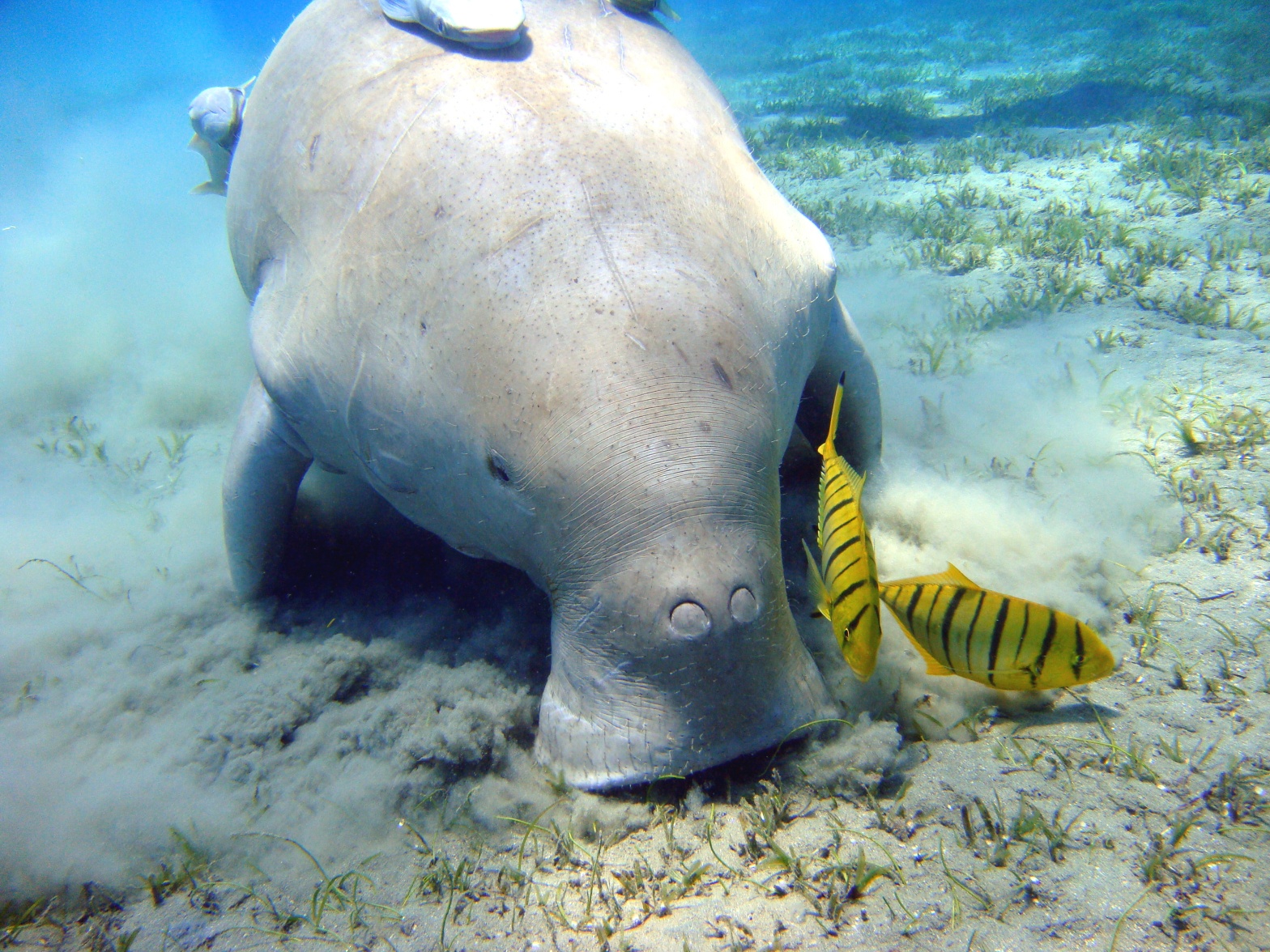Dugongs spark our curiosity and tug our heart-strings.
These sea cows are beautiful and fascinating creatures.
The first day of January we saved
One swimming dugong
Inspired by the carol “The Twelve days of Christmas”, we made up a song where we each month saved an animal – The Twelve Months of Endangered Animals Song.
The idea is to use the animal as the inspiration for ways to save animals and raise awareness but also to inspire new ideas and innovations – biomimicry. The first step when looking for ideas is to collect facts about dugongs. We put some of the information in the mindmap, which you can download for free.
Facts and Interesting Things about Dugongs.
Dugongs are “cows of the sea” as they only eat vegetables. Its snout is sharply downturned, which helps dugongs when they are grazing on seagrass meadows. They are the only ocean mammals that are exclusively vegetarian. They can eat up to 40 kg of seagrass per day.
Dugongs are rather slow-moving, and when moving along the seabed to feed they walk on their pectoral fins.

Australia is home to the largest population of dugongs, stretching from Shark Bay in Western Australia to Moreton Bay in Queensland. (Moreton Bay is an island that we could see on our morning walks along the beach when we lived in Australia. Sadly, we never saw any dugongs.)
The dugong. Sirenia, live in swamps, rivers, estuaries, marine wetlands, and coastal marine waters. Dugongs can remain underwater for 3 to 12 minutes while feeding and travelling.
The term Sirenia comes from the sirens of Greek mythology. A legend about the discovery of sirens involved lonely sailors who mistook them for mermaids.

When eating dugongs ingest the whole plant, including the roots of the seagrass, when this is impossible they will feed on just the leaves.Only certain seagrass meadows are suitable for dugong consumption, due to the dugong’s highly specialised diet.
Due to their poor eyesight, dugongs often use smell to locate edible plants. They also have a strong tactile sense and feel their surroundings with their long sensitive bristles.
They will dig up an entire plant and then shake it to remove the sand before eating it. They have been known to collect a pile of plants in one area before eating them.
The flexible and muscular upper lip is used to dig out the plants. This leaves furrows in the sand in their path.
What is seagrass? What is seaweed?
Seagrass are a group of flowering plants that produces flowers, seeds and fruit. Seaweed only produces spores and it is a type of algae.Seagrass has roots, whereas seaweed does not.There are around 60 species of seagrass but there are estimated to be between 5,000 and 6,000 known species of seaweed.Seagrass is a flowering plant that uses its roots to extract nutrients from sediment, while seaweed is a type of large algae that extracts nutrients from the water around it.
Why is seagrass important?
Seagrass ecosystems are as important as coral reef systems. Sadly, around 30 percent of the world’s seagrass habitat has already been lost.
Seagrass play an important role in carbon storage. Seagrass ecosystems with dugongs indicate a healthy ecosystem.Sewage and detergents, and other waste products all negatively affect seagrass meadows.
Human activity such as mining and boat propeller scarring also cause an increase in sedimentation which smothers seagrass, No light reaches the seagrass and it slowly dies.
Think dive into a world of possibilities
Below is a mindmap. And now we are looking for ideas. . .
What exciting ideas do you have?

Featured Photo: Dugong by Julien Williem

Very useful information. I admit? I don’t know much about dugongs. I think kids will love to search for them.
LikeLike